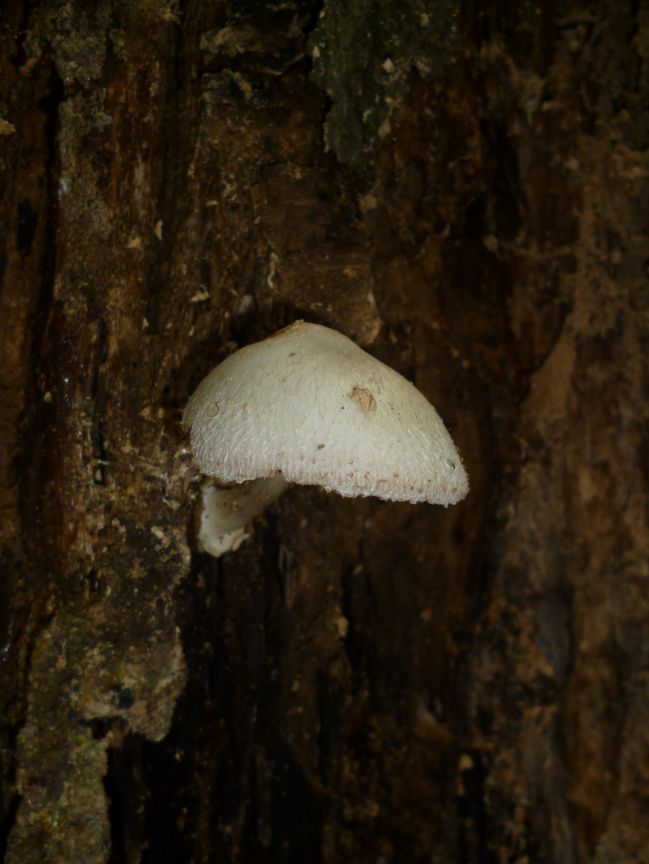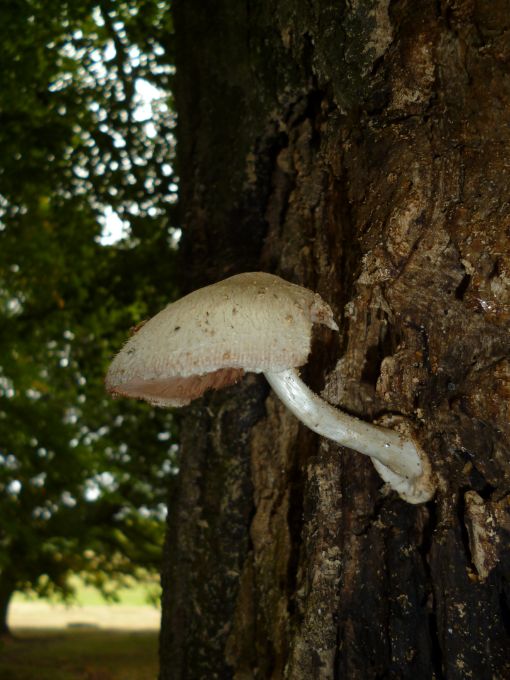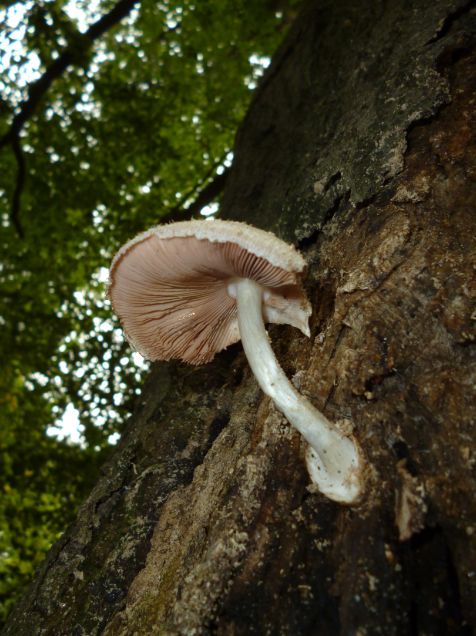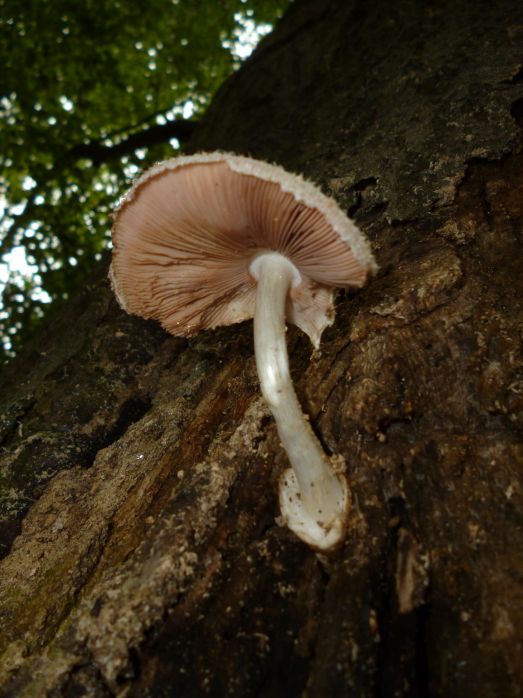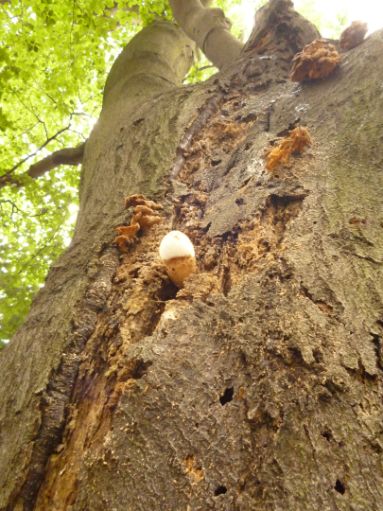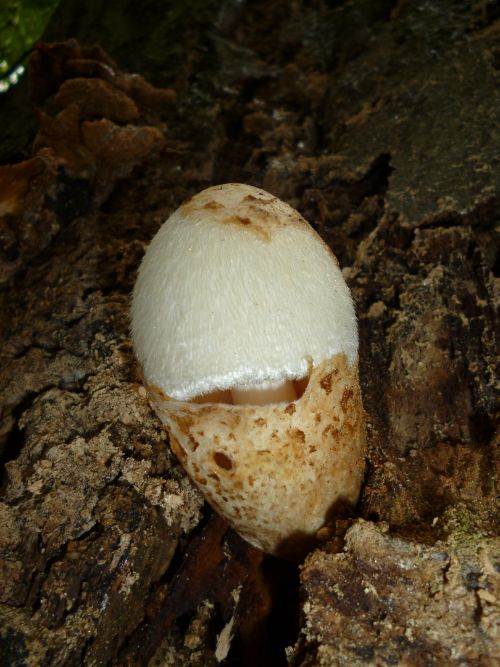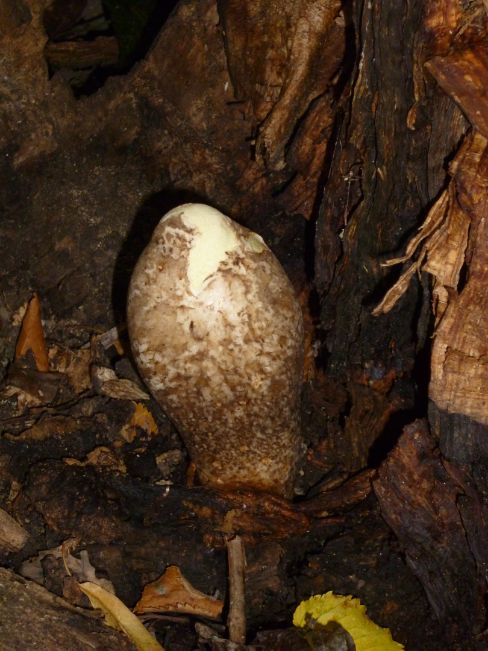Volvariella bombycina
Silky rosegill
Common name
Silky rosegill.
Often found on
Beech.
Sometimes found on
Other deciduous species including horse chestnut, maple, and oak.
Location
Found at the base of the host tree and along the main scaffold structure.
Description
Varied size. Begins as an encased fruit body within a mottled beige-white 'egg', which unfurls to form a splendid cream white cap with a silky finish. Gills begin white and become stained pink by the pink spore. The 'egg' remains in-tact at the base of the stipe.
Confused with
None.
Significance
Considered saprotrophic and associated with a white rot of the wood. It is unlikely that this species acts parasitically on the host tree.
